Showing all 7 results
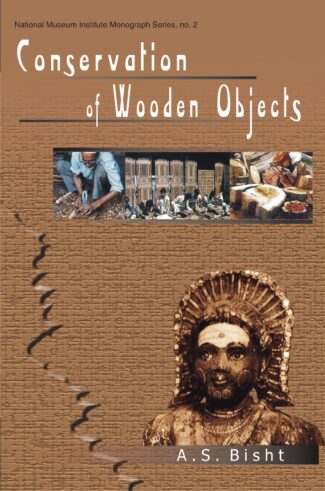
The book deals with all aspects of conservation of wooden artefacts and gives detailed information on types and location of wooden artefacts in India, the various agencies of degradation, and the technology to be adopted to re-construct and conserve these precious evidences of Indian heritage.
The book deals exhaustively with conservation of our ancient heritage existent in the form of wooden artefacts. This volume contains four chapters. The first chapter deals with the history of use of wood, location of wooden artefacts and the need to review our policy of acquisition of artefacts. The second highlights the information on the source of wood, identification, properties of wood, and techniques of making wooden objects. The third one explains the deterioration mechanism of wood substance and other constituents by various agencies of degradation, inherent structural defects and need for proper examination and documentation to decide on the treatment required. The final chapter details the conservation technology for wooden objects explaining the steps in eradication of biodeterioration, cleaning, physical repairs, restoration/retouching and preventive measures. No doubt this book should serve as a valuable guide to archaeologists, conservators, and students of museology.
Exploring Medieval India through Persian Sources revisits medieval Indian history through eleven authoritative and resourceful papers presented in a national seminar held at the Department of History, Aligarh Muslim University in 2016 by scholars of repute. The Persian sources include political chronicles, biographical accounts, Insha literature, mystic literature (malfuzat, maktubat, etc.), dastur of Amal, farmans, nishan, parwana, foreigners’ accounts, vernacular literature, epigraphy, numismatic, archaeology and paintings.
These papers should generate interest among the researchers to further showcase the world many a facet of India’s unknown intellect and history.
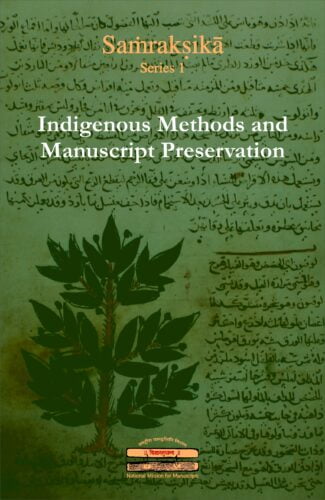
The National Mission for Manuscripts, through its nationwide documentation efforts, is engaged in preserving and rendering accessible India’s knowledge cultures. The Mission’s Seminar Series, Samrakshka, which began in February 2005, presents various regional and local practices employed in the creation and preservation of manuscripts.
The National Mission for Manuscripts was established as a five-year project in February 2003 by the Department of Culture, the Ministry of Tourism and Culture, Government of India. Its purpose is to locate, document, preserve and disseminate the knowledge content of Indian manuscripts. The Mission, through its nation-wide network and documentation efforts, is engaged in preserving and rendering accessible India’s knowledge cultures, seeking to link the ideas and visions of the past with the future. The Mission’s Seminar Series, ‘Samrakska’, began with a Seminar in February 2005 on Oral Traditions and Indigenous Methods of Preservation and Conservation of Manuscripts. Papers presented during this Seminar deal with the various regional and local practices employed in the creation and preservation of manuscripts. They provide valuable information on old and indigenous techniques which, over the years, have been relegated to the margins of contemporary conservation practices and deserve a revival. Conducted over a period of three years, the Seminar provided ample opportunity to the participants to share their ideas and experiences, discuss the merits of various alternatives and formulate plans in the area of manuscript conservation for the future.
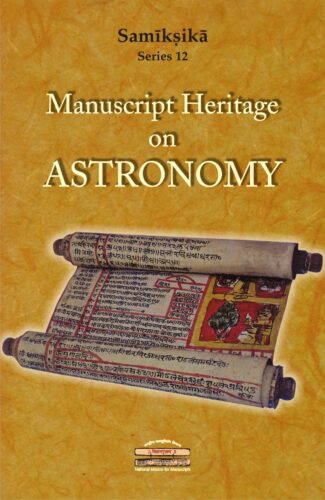
It covers a wide range of topics such as astronomy, astrology, Indian mathematics and mathematicians, astro identities in Vedas, Vedic Jyotisha, rituals and religious observances associated with many astronomical developments, methods of disaster predictions, and the application of astronomy in varied contexts among many other topics, revealing the knowledge hidden in our old scriptures.
Manuscript Heritage on Astronomy covers varied topics on Indian astronomy. It has contributions of 38 well-known Sanskrit scholars and scientists of high repute. This volume is the outcome of a seminar organized by the Oriental Research Institute, Sri Venkateswara University, Tirupati, is published as part of the Samiksika Series (Samiksika 12) of the National Mission for Manuscripts. This bi-lingual book has seventeen papers in English and twenty-one papers in Sanskrit.
It covers a wide gamut of topics such as our rich heritage in astronomy, moving zodiacs, Indian mathematics and mathematicians, astro identities in Vedas, Vedic Jyotisa, contribution of Aryabhatiyam, rituals and religious observances associated with many astronomical developments, methods of disaster predictions, and the application of astronomy in varied contexts among many other topics.
This volume should invite the keen interest of many a scholar and should turn out to be of good use to the scholars working in the area of astronomy.
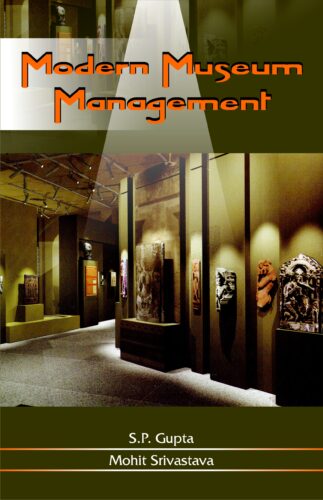
This book scholarly examines various aspects of Museology and Museography. It discusses the origin of the word museum its definition, types of museums, museum architecture, museum management and maintenance, famous museums of the world, besides the educational role of museums.
This book is a scholarly effort to examine various aspects of Museology and Museography. It discusses the origin of the word museum its definition, types of museums, famous museums of the world that have developed since the eighteenth century and the development of museums in India. It deals with the educational role of museums: its provision of non-formal, visual, recreational education through creating awareness by its various activities. It is concerned with different aspects of museum architecture. In a detailed study of museum management and maintenance, it takes up the mode of collection, documentation, exhibition and conservation of diverse items, as well as museum ethics and museum security. A special effort has been made to clarify the terms and concepts like marketing, orientation, evaluation, communication and administration which are deeply related to museums. The book deals with the role of some international organisations and conventions with regard to collection and preservation of materials. The attempt has been to simplify the subject and present its methodologies with clarity. This book will interest students of Museology and Conservation as also Museum Professionals as it provides useful guidelines about Curatorship.

Twelve authentic papers six in Hindi and six in English as part of the Tattvabodha series deal with varied subjects of India’s knowledge system. These papers are from well-known experts and can be of great interest to students, researchers and scholars of Indology.
The National Mission for Manuscripts was established in February 2003 by the Ministry of Culture, Government of India with the purpose of locating, documenting, preserving and disseminating the knowledge content of India’s handwritten manuscripts, said to be the largest collection of handwritten knowledge documents in the world. While looking ahead to reconnect with the knowledge of the past, the Mission is in the process of trying to re-contextualize the knowledge contained in manuscripts for the present and the future generations.
The Mission launched a lecture series titled ßTattvabodhaû in January 2005. Since then, a monthly lecture series is organized in Delhi and other academic centres all over the country. Tattvabodha has established itself as a forum for intellectual discourse, debate and discussion. Eminent scholars representing different aspects of India’s knowledge systems have addressed and interacted with highly receptive audiences over the course of the past few years.
The present volume, fourth in this series, comprises 12 lectures delivered under Tattvabodha lectures series. A glance at the list of contributors will reveal that the Mission has had the privilege of hosting the finest exponents of Indian culture and the compilation of their lectures makes for invaluable literature.
These well-researched papers talk about ancient texts like the lost texts of the Vishishtadvaita philosophy, the Kalpagamasamgraha written by Aryadasa which is a commentary on Vedic text, and the manuscripts on the Natyashastra and its text. The lucidly presented studies include an interesting textual criticism and critical reading of the text Abhijnanashakuntala by Kalidasa. They examine concepts such as that of Vak with special reference to Bhartrihari that involves a detailed scrutiny of the concept as understood in the Vedas and till Bhartrihari’s time, and the Advaita concept as available in Vedic hymns. They deal with the problems involved in editing texts on astrology and manuscripts on music. They include a survey of the manuscripts available in the Himalayan region. A study on original Persian sources to throw light on the India of the past comes in as an attempt to highlight significance of using original sources to understand Indian history.
The volume, covering wide-ranging subjects penned by experts in various fields, will surely interest scholars and students of Indology.
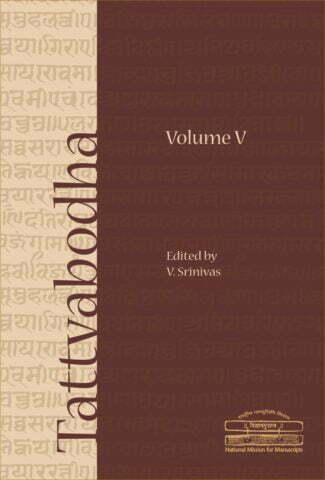
This volume, fifth in the Tattvabodha series, contains eleven papers in English, Hindi and Sanskrit, covering a variety of subjects of Indian knowledge system presented by well-known authors in different Tattvabodha lectures organized by the National Manuscript Mission.
The National Mission for Manuscripts was established in February 2003 by the Ministry of Culture, Government of India with the purpose of locating, documenting, preserving and disseminating the knowledge content of India’s handwritten manuscripts, said to be the largest collection of handwritten knowledge documents in the world. While looking ahead to reconnect with the knowledge of the past, the Mission is in the process of trying to re-contextualize the knowledge contained in manuscripts for the present and the future generations.
The Mission launched a lecture series titled Tattvabodha in January 2005. Since then, a monthly lecture series is organized in Delhi and other academic centres all over the country. Tattvabodha has established itself as a forum for intellectual discourse, debate and discussion. Eminent scholars representing different aspects of India’s knowledge systems have addressed and interacted with highly receptive audiences over the course of the past few years.
This volume, fifth in the series, contains eleven papers presented by well-known authors in different Tattvabodha lectures organized by the Mission. These papers are in English, Hindi and Sanskrit, covering a variety of subjects of Indian knowledge system.
The authors deliberate on topics such as the closeness of the Rigvedic language to the Proto-Indo-European language; different branches of learning in medieval Bengal; unique manuscripts of Asiatic Society; eighteenth-century Calcutta based on the leads from the British Official Records; Sanskrit as the mind of Silk Route; formation of Kashmiri language; a comparative study of Bengali, Hindi and Malayalam Ramayanas; Arabic manuscripts and Arabi-Malayalam literature of Kerala; Bhakti Literature of Rajasthan; manuscripts on Ayurveda; and published and unpublished commentaries of Bhagavata Purana.
These scholarly articles should invoke keen interest among academicians, scholars and students of Indology.
| There are no products |